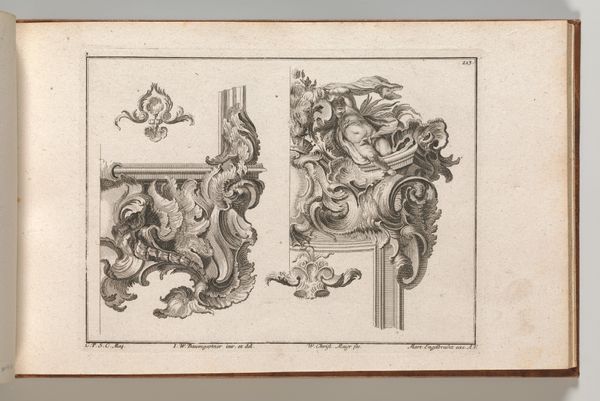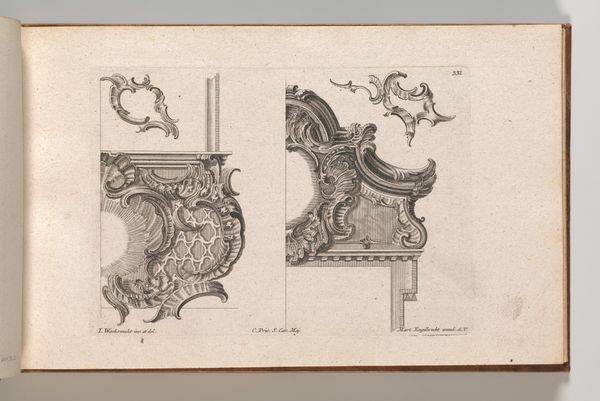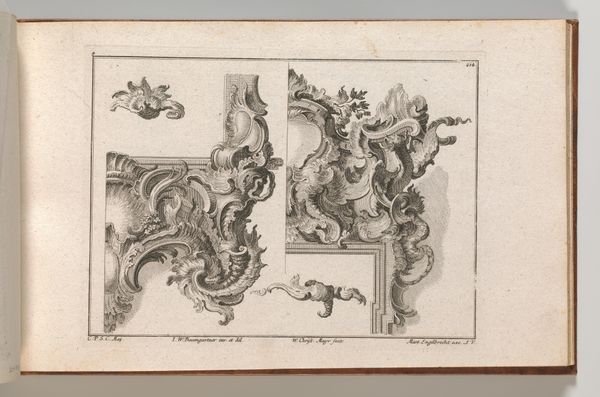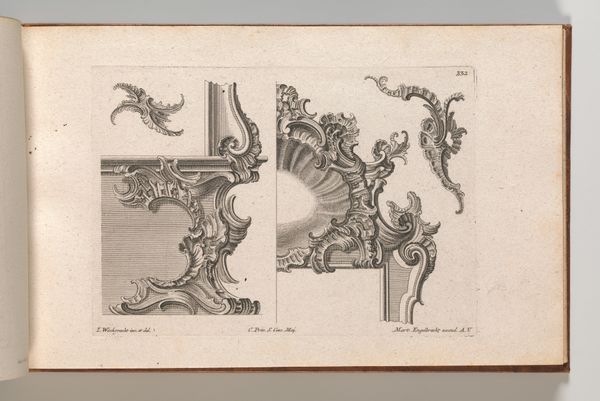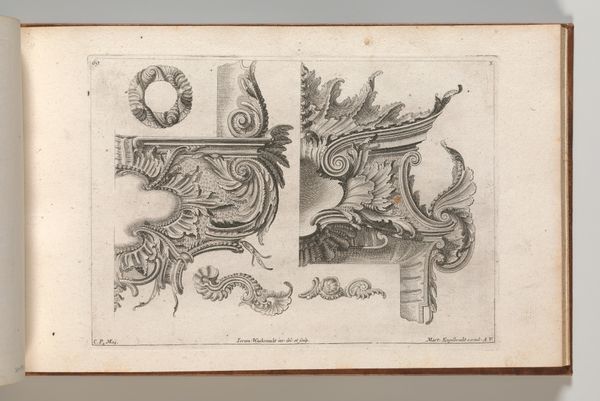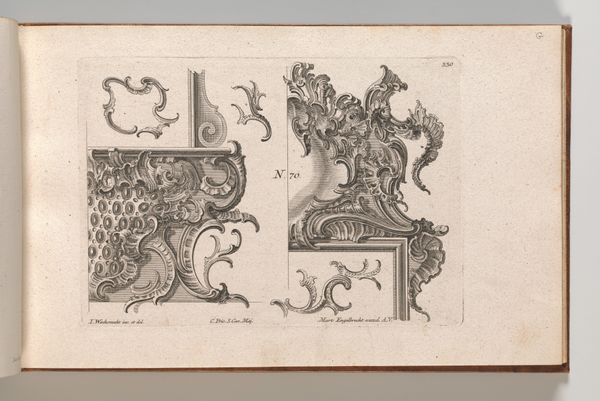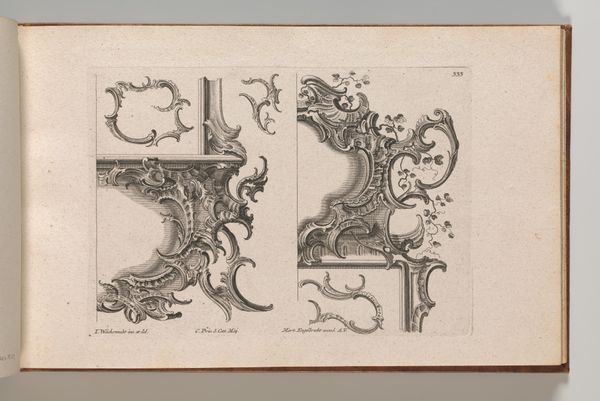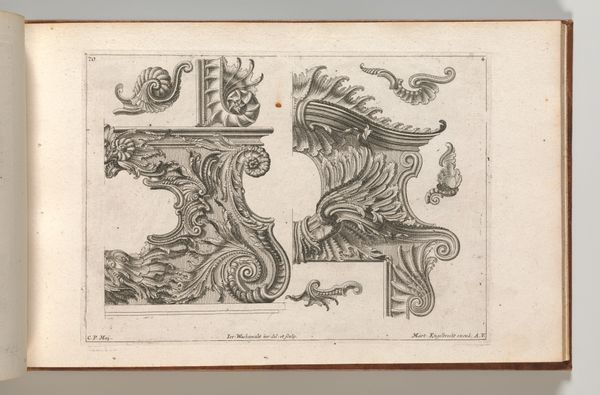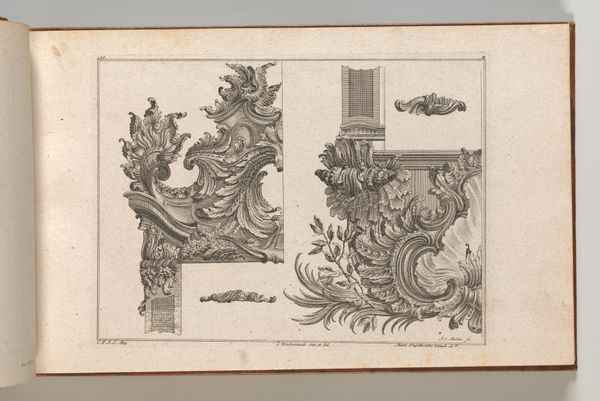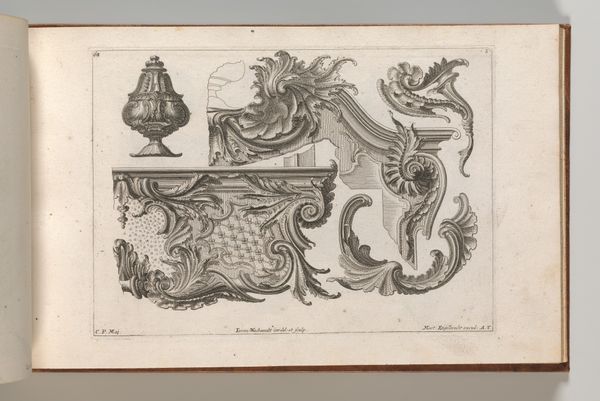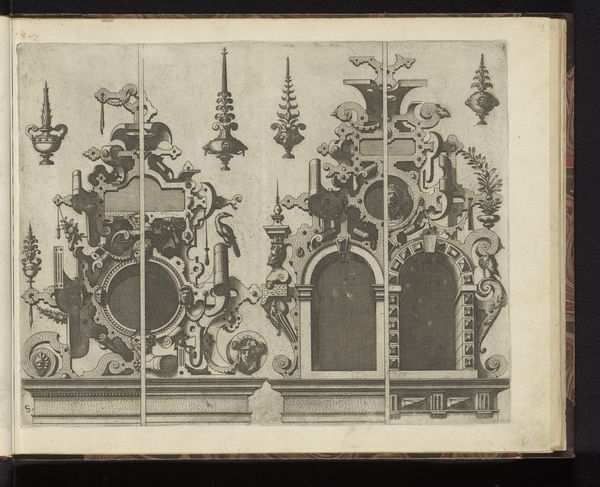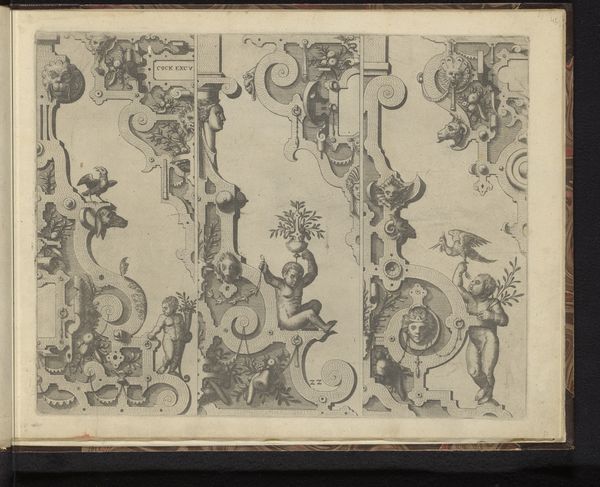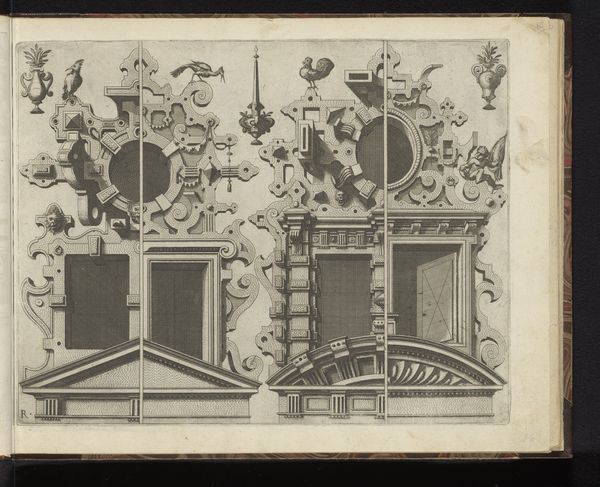
Suggestion for the Decoration of Lower Right and Top Right of an Altar Frame, Plate 1 from an Untitled Series with Rocailles Ornaments for Altar and Door Frames 1745 - 1755
0:00
0:00
drawing, ornament, print, engraving, architecture
#
drawing
#
ornament
#
baroque
# print
#
geometric
#
decorative-art
#
engraving
#
architecture
#
rococo
Dimensions: Overall: 8 7/16 × 13 3/4 in. (21.5 × 35 cm)
Copyright: Public Domain
Editor: So, this is “Suggestion for the Decoration of Lower Right and Top Right of an Altar Frame” created sometime between 1745 and 1755 by Wolffgang Christoph Mayr. It's an engraving, showing detailed architectural ornaments. What I immediately notice is the intricacy and the almost playful asymmetry. How do you read the symbolic language at play in this piece? Curator: This work is fascinating, especially when considering the Rococo style. Look at the “rocailles” – the shell-like motifs. They’re not just decorative; they represent nature tamed and controlled, reflecting a worldview that seeks order within the wild. The altar, traditionally a place of sacrifice and reverence, is here being reimagined with these whimsical, almost frivolous, elements. Does that contrast spark any thoughts? Editor: It does! It feels like there's a tension between the sacred and the secular, a blurring of boundaries. Like the architecture itself is performing a ritual of sorts. Curator: Precisely! Consider the cherubic figures intertwined with the foliage. Are they purely ornamental, or do they carry a deeper spiritual significance? Think about the psychological effect these images would have had on worshippers. Do they uplift and inspire, or distract and confuse? Editor: That makes me think about how the rising merchant class used religious symbols to communicate their own wealth, authority and elevated status. It’s not really about communicating a particular spirituality, it's about self-representation. Curator: Yes! By appropriating religious iconography, they create their own narratives. It seems Mayr captured this shifting cultural landscape beautifully. Editor: Looking at it from that perspective, it’s less a religious piece, and more of a social commentary, hidden in ornamentation. Curator: Exactly. It really challenges our modern ideas of what religious iconography is for and suggests something of what it meant for viewers at that time.
Comments
No comments
Be the first to comment and join the conversation on the ultimate creative platform.

